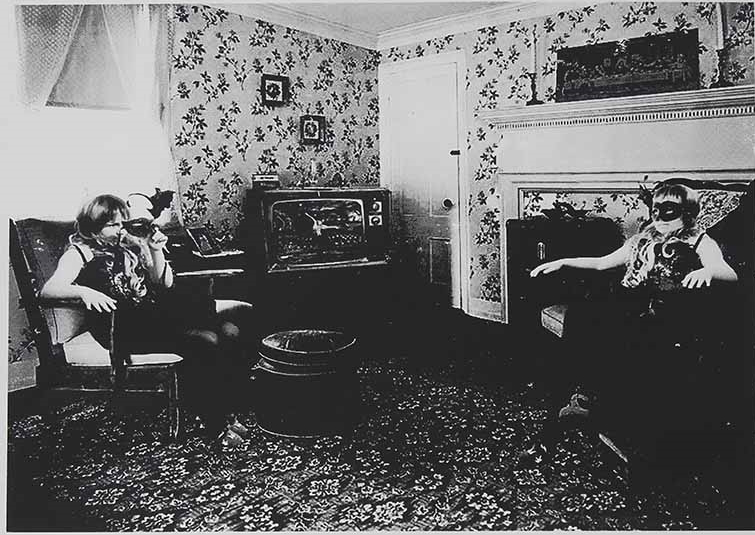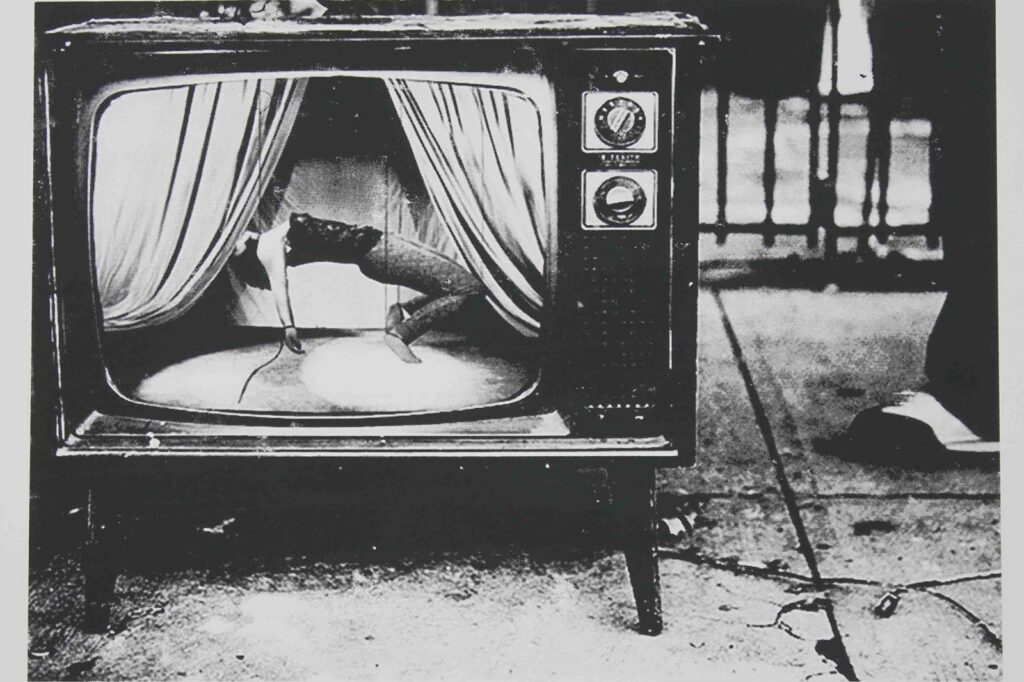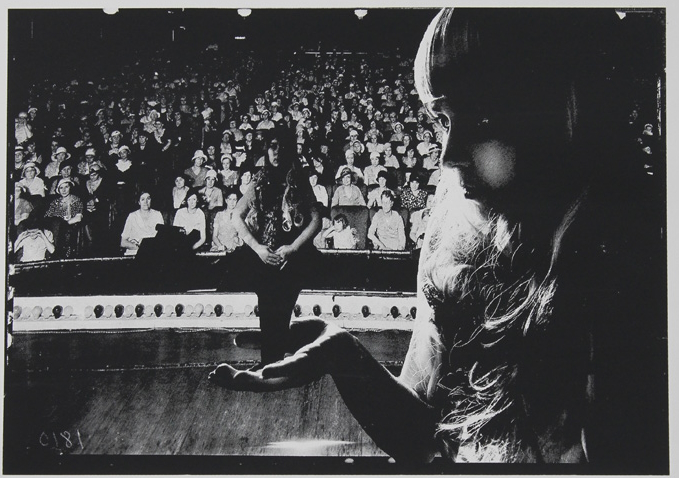Greenwood’s series “Smoke and Mirrors” (2014) explores the subconscious, memory, and identity through the use of surrealist vintage imagery. Through monochromatic silkscreen prints, Greenwood creates a form of nostalgia and a mirror into the past, which allows the viewer to interact with the artworks by creating their own interpretations and perhaps entering the work themselves.

Emily Greenwood’s first work on the page brings the viewer to a domestic setting—a room that is usually a place for safety and the main space of a home. However, it has been distorted—it looks as though two of the same person are inside the work facing each other in a somewhat mirrored way. The two seemingly look at each other, creating an uncertain atmosphere, while the retro television plays an indiscernible film or show (however from the series we can understand that what plays on the TV is what is on the next print).
The scene seems to be set in the 1960s or 1950s, which is especially apparent from the vintage furniture and wallpaper. This becomes a metaphor for the past and memory, yet it has been fractured into a dream through the doppelganger. Our dreams often tend to be nonsensical and do not follow a narrative, allowing confusing elements to make the viewer think and interpret. Perhaps there are different identities, or are they the same person? When we see ourselves in our dreams, is that our doppelganger who lives within us? The work poses great questions about the disorientation of dreaming and allows the viewer to interpret them in their ways.

The next print in the series invites the viewer to question the distortion that comes with the subconscious mind. The person inside the television also seems to be the same as the previous print, which may comment on one’s self-perception. One may see oneself within the dream and again and again in the dream to the point of questioning what one sees within the dream.
The use of vintage television is also interesting as it brings the idea of memory into the form of old technology—yet it also plays a memory within the dream. Or perhaps the memory within the dream is also a dream—delving deeper within the subconscious.

The last print in the series presents the doppelganger in the centre of the performance, yet the scene’s perspective makes it seem like they are in the hands of the other figure. This perspective creates an illusion which perplexes the mind while the background (the audience) seems to watch both the viewer and the performance. This makes the dream seem like we, the viewer, are a part of the performance, which is being watched by the audience, who may perhaps be symbolic to a collective subconscious.
Overall, Greenwood has successfully captured the essence of a dream and the subconscious and has transported the viewer into these snapshots. The monochromatic colour of the prints makes these memories seem more like a lived experience despite its not being so. Thus, it invites the viewer to contemplate what is real and what is created through the subconscious.
